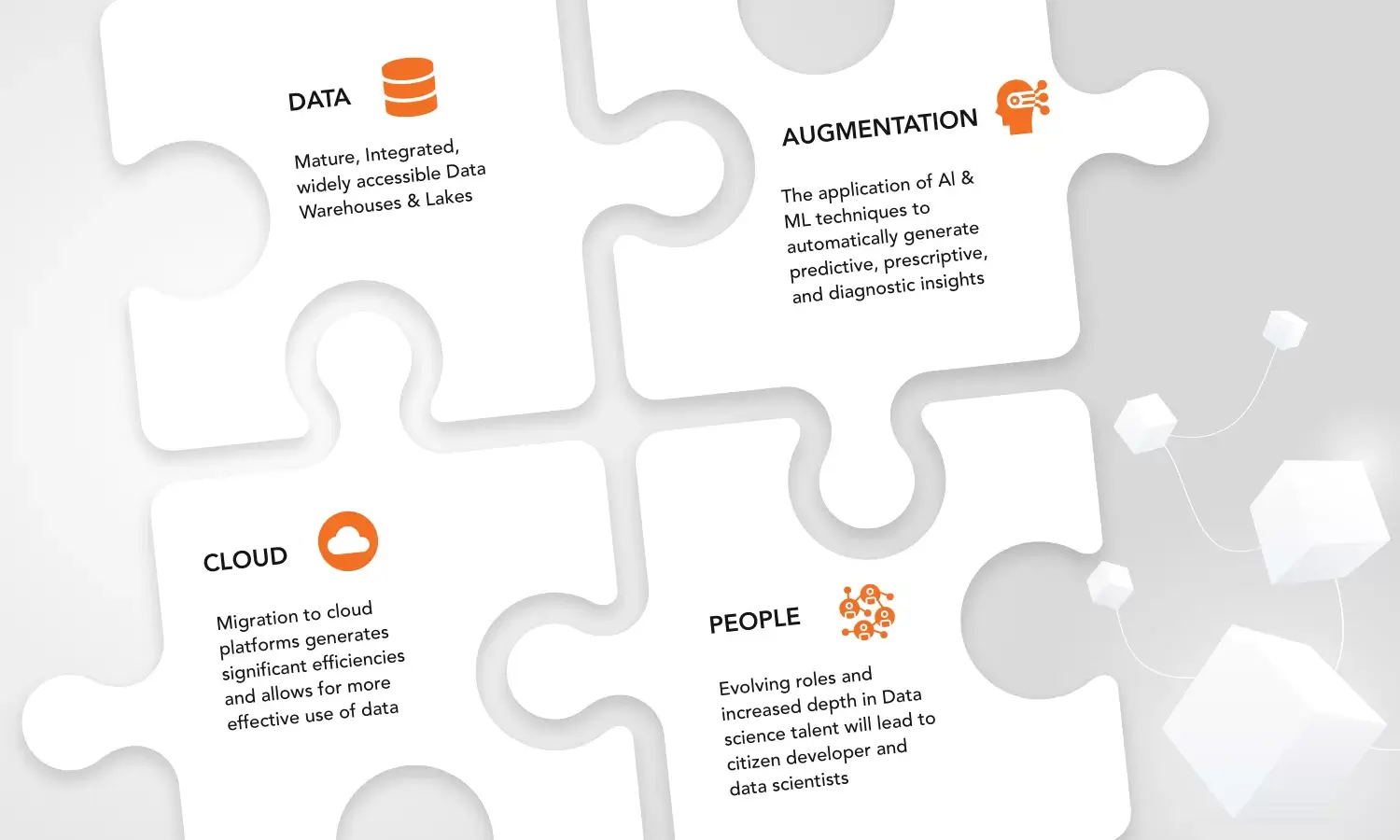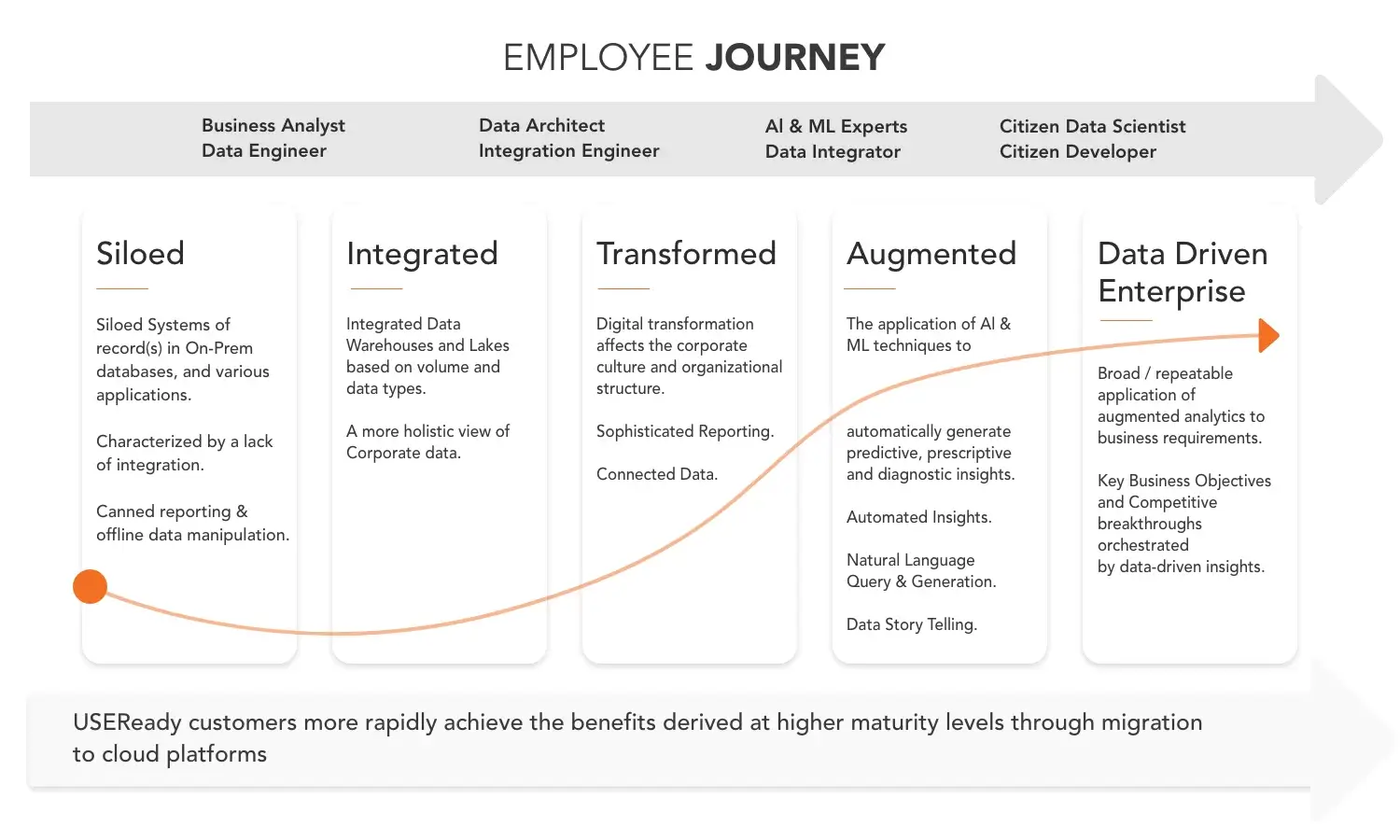Intelligent Transformation: It’s the Data, Stupid!
The Power of Data in Driving Intelligent Transformation
Leveraging Data for Successful Digital Transformations

A quick google search for “It’s the Data, Stupid” yields 133,000,000 hits. Adding quotation marks reduces that to 4,290 references. A dramatic narrowing of results, but still a significant amount of information to sift through. The importance of data has never been more starkly demonstrated than in the past year. Various factions have attempted to publicize data to support their differing views on a wide range of topics from the worldwide pandemic to the US presidential election. Depending on your perspective, the data presented ranges from profoundly important to perversely trivial.
This author declines the challenge to participate in these macro-level conversations, However, would like to focus on the convergence of data analysis trends in the corporate world that are transformational and were so very well defined in Carlie Idoine’s Gartner article titled, “Worlds Collide as Augmented Analytics Draws Analytics, BI and Data Science Together” published in March of 2020.
At USEReady, we passionately believe that the maturity of an organization’s use of data as a competitive differentiator will determine its ability to be successful in the critical dimensions of:
- Operational efficiency
- Competitive positioning and breakthroughs
- Employee development and retention
- Strategic business outcomes across the organization
Understanding the Role of Data in Intelligent Transformation
Key Components of Data-Driven Strategies for Transformation
Unlocking Business Value Through Data Analytics and BI
Strategies for Implementing Data-Driven Decision-Making in Transformation Initiatives
Worlds Collide
Over the last few years, we have seen a surge in Artificial Intelligence (AI) and Data Science and Machine Learning (DSML) capabilities in Analytics and Business Intelligence. These augmentation functions are in the words of Gartner, “making once-distinct markets collide” in the form of augmented analytics. The leverage that mature organizations can derive from broadly integrated data with the application of AI and DSML tools to augment the data generates significant tangible insights that lead to competitive advantages with profound impact.
The business value that can be derived from the application of augmented analytical approaches to an organization’s data can be dramatically enhanced by the migration of data stores to integrated data warehouses and lakes on Cloud platforms. The scalability and accessibility of these platforms allows for the more effective application of AI and DSML technologies to a companies’ data.
In addition, this growth in data maturity will require and drive the evolution of data science talent in the organization. Traditional business analysts and data engineering roles will need to be augmented with AI and DSML specialists. This will provide a democratized environment where citizen data scientists and citizen developers should naturally evolve within the organization.
Pieces of the Puzzle

What This Means for You
In 1986, the Defense department in the US developed the Capability Maturity Model. The term “maturity” relates to the degree of formality and optimization of processes, from ad hoc practices, to formally defined steps, to managed result metrics, to active optimization of the processes.
Organization progress from environments where they have siloed, often on-premises data stores that are ad-hoc in nature through a continuum where data is integrated and then transformed via Cloud technologies. The final stage of this evolution includes augmentation with AI and DSML functionality in the form of descriptive, diagnostic, prescriptive, and predictive capabilities resulting in a truly data driven enterprise.
If the pieces of the puzzle come together correctly, decision making processes, key business objectives, and competitive breakthroughs will be informed by this mature data architecture.

As with most maturity models, the distribution of companies across the various levels forms a bell-shaped curve. In addition, within different industries the maturation of corporate data and the use of cloud and AI and DSML tools varies widely. In the above model, most companies are moving through the second and third phases. Truly augmented organizations with a mature data driven culture are exceedingly rare.
The Importance of Data Quality in Intelligent Transformation
Building a Data-Driven Culture: Best Practices and Challenges
Case Studies: Successful Examples of Data-Driven Transformations
Overcoming Obstacles: Addressing Common Challenges in Data-Driven Transformation Projects
Our mission is to provide the intelligent transformation, processes, and technologies required to help users succeed with their data. Our focus is on helping organizations drive the greatest possible value from their data and technology required to maximize its impact.
We would love to have a conversation on how intelligent transformation and strategic adoption of data can supercharge your growth.











 Media Coverage
Media Coverage Press Release
Press Release
